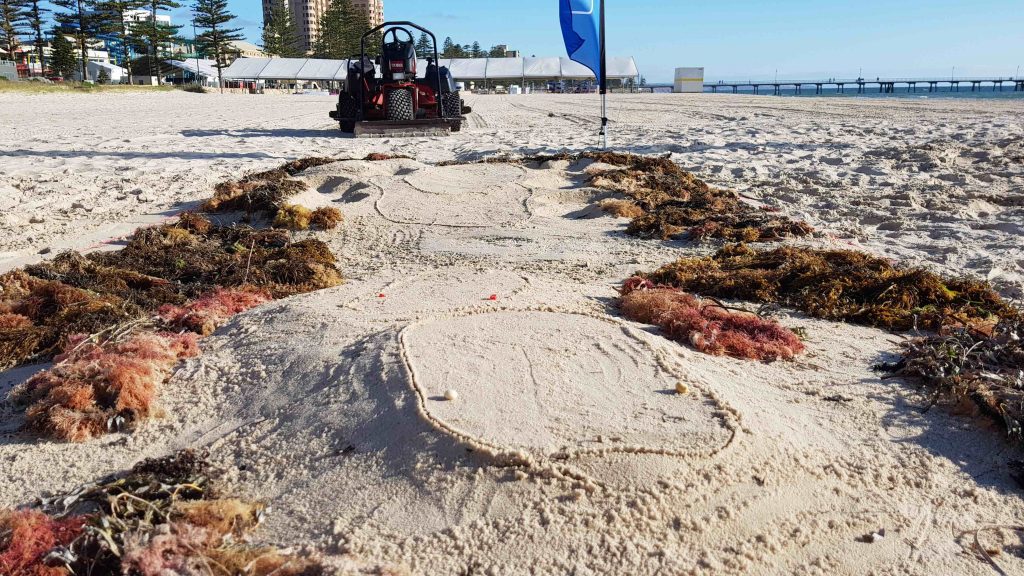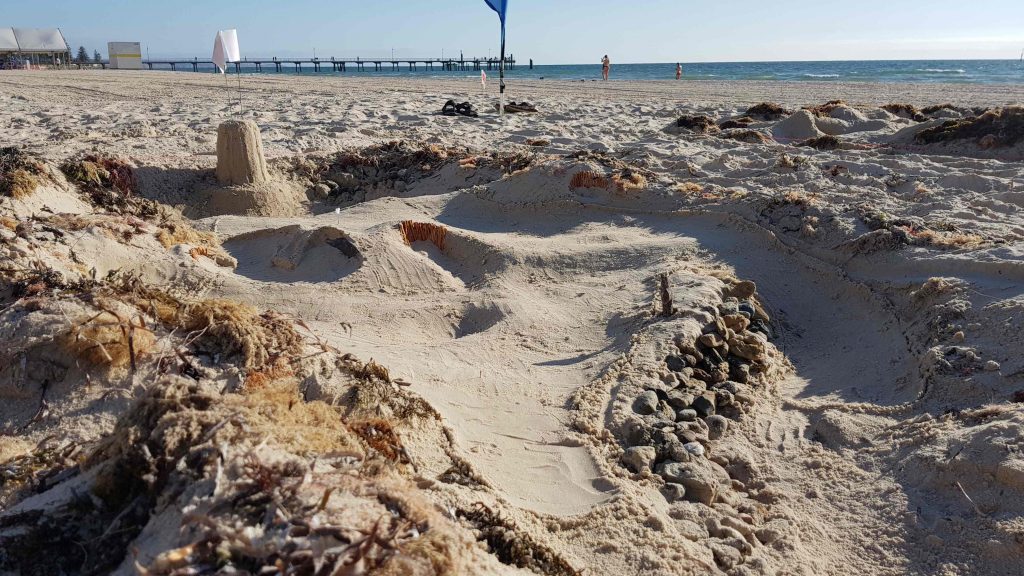Eighteen course architects from around the world were given a patch of prime real estate on the iconic Glenelg Beach in Adelaide and did exactly what you would expect.
As part of their study tour of the finest golf courses Adelaide has to offer, the six-man teams representing the Society of Australian Golf Course Architects, the American Society of Golf Course Architects and the European Institute of Golf Course Architects were invited to showcase their talents in the inaugural Golf Sand Sculpting competition.
Given a 4m x 2m parcel of sand to work with, the only instructions were that their creation had to be golf-themed but what transpired spoke to the historical influences of the respective geographical locations.
Honouring the fingerprint Alister MacKenzie laid on some of Australia’s finest layouts, the Australian team led by Neil Crafter went about lovingly recreating one of the country’s most famous par 3s, the par-3 5th at Royal Melbourne’s West Course.

The Europeans seemed intent on literally recreating the links land on which their most hallowed courses reside by dousing their section of sand with water hauled from the ocean so that it resembled the crumpled fairways of St Andrews.
Team captain Ken Moodie later conceded they simply had no idea what to do to begin with before shaping a par 3 of their own that harked back to ‘The Dell’ hole at Lahinch in Ireland.

But, quite predictably, the most ambitious project of the three belonged to the American team led by Andy Staples.
As the other two teams debated concepts the US architects began gathering seaweed, rocks and any other paraphernalia they could find on the Glenelg foreshore.
They used their hands as excavators as they went about designing and building a driveable par 4 complete with rock wall, a variety of tees and bunkers with pretzels substituting for railway sleepers.

As one of three appointed judges it was difficult to determine a winner simply because of the subjective nature of debate around what makes a good golf hole.
As an Australian how could I go past a meticulously executed homage to Royal Melbourne?
How could I look past the wildly undulating canvas created by the European team that transported you instantly to that part of the world?
And what of my fondness for short par 4s… and pretzels?
Ultimately the three-man judging panel awarded the US the honour but debate over the merits of each of the three holes continued well into the night.
Which was perhaps the most predictable outcome of the entire exercise.



